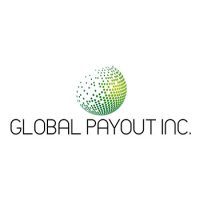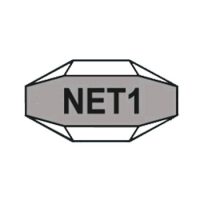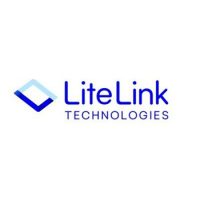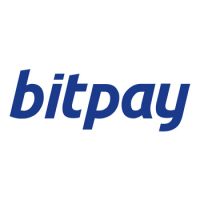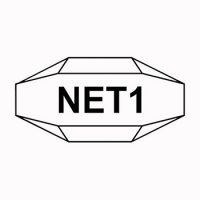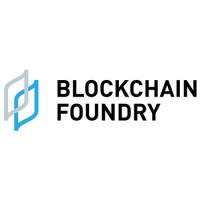Blockchain
How MiCA is Paving the Way for a Safer and More Transparent Crypto Industry Protecting Investors and Innovators

With the advent of the MiCA regulation, the European crypto landscape is poised for major changes. According to Mike Romanenko, CVO and Co-Founder of Kyrrex, MiCA is set to enhance transparency and protection for investors and innovators, while also creating new opportunities for crypto players throughout Europe.
The rationale of MiCA in the current crypto landscape
The Markets in Crypto-Assets (MiCA) regulation is a transformative milestone aimed at enhancing transparency, investor protection, and integrity of the crypto market. This regulation is not merely about compliance. It is an opportunity for crypto businesses to build credibility, foster innovation, and protect their investments.
Given the need for trust and reliability in the crypto sphere, MiCA’s requirements are designed to help businesses attract hesitant investors and align with traditional financial institutions. A proactive engagement with MiCA not only helps fulfill regulatory demands but also positions European crypto companies as global pioneers in setting regulatory benchmarks for the industry.
MiCA’s role in setting transparency and investor protection standards
The regulation introduces disclosure rules, ensuring that issuers of crypto-assets provide detailed and accurate data about their projects. This includes clear descriptions of their identity, project details, rights and obligations of investors, the underlying technology, and associated risks. By mandating such disclosures, MiCA enhances transparency and allows investors to make well-informed decisions.
In addition, MiCA emphasizes operational resilience and market integrity. Crypto-asset service providers are required to implement IT systems, cybersecurity measures, and governance frameworks to mitigate operational risks and safeguard investor assets. Trading platforms and intermediaries must adopt surveillance mechanisms and transparent trading rules to prevent market abuse. These measures work towards creating a secure environment for digital asset transactions, increasing investor confidence in the market.
Consumer protection is another critical focus of MiCA, which mandates fair pricing, clear communication, and measures to prevent fraud and market manipulation. Compliance with anti-money laundering (AML) and counter-terrorist financing (CTF) regulations is enforced to combat illicit activities in the digital asset space.
To sum up, the following are the key standards established by MiCA:
- Clear disclosure requirements. Detailed whitepapers disclosing essential project information.
- Protective mechanisms. Robust IT systems, cybersecurity, and governance frameworks.
- Market integrity and transparency. Surveillance mechanisms and transparent trading rules.
- Consumer protection. Fair pricing, clear communication, fraud prevention, and market manipulation measures.
For example, a crypto-asset service provider under MiCA would need to provide a detailed whitepaper about the crypto-asset project, the rights and obligations attached to the crypto-asset, and information about the risks. Also, it would need to ensure transparent property valuation and compliance with AML regulations, thereby enhancing trust and security in the investment process.
Impact on cross-border market stability
By addressing the fragmented nature of digital asset regulation, MiCA aims to create a unified framework that enhances clarity for both investors and businesses in various jurisdictions. The regulation not only facilitates operations across the EU but also encourages other countries to implement similar rules by providing a clear legal structure for launching new tokens and services.
Following are insights into MiCA’s role in building market stability:
- Anti-money laundering (AML) rules. Under MiCA, there are solid provisions for AML and counter-terrorism financing. Crypto-asset service providers must implement AML controls, which is crucial in an industry often suspected of facilitating illicit activities.
- Operational resilience. It requires service providers to develop plans in place for cyber-attacks and other disruptions, which is essential in an industry where technology plays a crucial role.
- Market integrity. MiCA aims to prevent manipulation and insider trading within the crypto sphere. It sets rules for trading venues and participants, contributing to a more trustworthy market environment.
- Cross-border services. One of the key benefits of MiCA is the “passporting” mechanism. It allows service providers authorized in one member state to operate across the entire EU, facilitating the growth of a unified market and reducing administrative burdens.
European crypto companies can position themselves as global leaders in crypto regulation by fully integrating MiCA into their operations. A proactive approach could influence similar regulatory developments worldwide and establish EU standards as a benchmark for global crypto activities. For example, part of the Kyrrex ecosystem is REX, a regulated Virtual Financial Assets Services provider, proactively complies with MiCA standards as a part of its global strategy to emphasize the company’s commitment to providing secure and compliant crypto services.
As White Label solutions for businesses, we established SimplifyLabs. For companies seeking to enter the crypto-asset industry, SimplifyLabs provides a ready-to-use platform that includes extensive spot trading capabilities, mobile apps, custom nodes and vaults, and an admin panel. By leveraging Simplify’s White Label solutions coupled with robust transaction monitoring systems and expert legal guidance, companies can accelerate their journey toward MiCA compliance.
Challenges of MiCA’s implementation
Despite all the benefits described above, MiCA introduces some challenges that players in the crypto market must consider. While it aims to create a harmonized regulatory environment, the strict compliance rules can stifle innovation and impose significant costs on market participants. Businesses involved in the issuance, offering, or trading of crypto-assets, as well as those providing related services within the EU must integrate new compliance measures, which may require large investments in technology and legal support. Balancing between regulation and innovation is one of the primary hurdles in the effective implementation of MiCA.
Following is the list of MiCA’s challenges:
- Compliance costs. High costs of licensing and reporting obligations can deny entry for smaller companies.
- Innovation vs regulation. The risk of overregulation may curb innovation and experimentation within the crypto-asset industry.
- Global competitiveness. The EU’s approach might set a precedent, however, it imposes rigorous standards that could be challenging for international companies to fulfill.
For instance, a company aiming to issue e-money tokens must not only navigate MiCA’s regulatory rules but also allocate considerable resources to compliance. The success of MiCA will depend on how the market can adapt to the above challenges and find a balance between regulation, innovation, and the overall growth of the crypto-asset environment.
Future prospects for MiCA
The future of MiCA presents vast opportunities for innovative regulatory compliance and growth in the crypto-asset sector. Despite bringing some challenges, it possesses the potential to fortify the stability of crypto-assets while cultivating an environment where digital financial products gain enhanced credibility among users.
Governments and businesses may utilize this opportunity to pioneer advancements in the regulatory space, obtaining long-term benefits while fostering an ecosystem of transparency. Businesses, investors, and innovators should view MiCA not as an obstacle, but as a baseline for sustainable progress and innovation.
About Kyrrex
Kyrrex is a crypto ecosystem that provides a one-stop shop for bridging finance, payment, and trading operations with cryptocurrency on a single platform. Kyrrex is registered in Saint Vincent and the Grenadines, and its operations have been acknowledged and accepted by the SVG Financial Services Authority to provide crypto services with the goal of giving clients the flexibility to carry out all their crypto transactions under one roof.
REX, operating under the tradename Kyrrex, obtained the Malta VFA Class 4 License in 2021. Applying for such a license requires the applicant to demonstrate a deep understanding of the regulatory framework, provide detailed business plans, ensure compliance with the relevant AML regulations, and establish internal security measures.
The post How MiCA is Paving the Way for a Safer and More Transparent Crypto Industry Protecting Investors and Innovators appeared first on HIPTHER Alerts.
Blockchain
EAT & BEYOND ANNOUNCES PROPOSED NAME CHANGE AND UPDATED INVESTMENT POLICY
Blockchain
Blocks & Headlines: Today in Blockchain – May 30, 2025 (Fraser Edwards, Kyiv NFT, Spirit Blockchain Capital, Indian eHealth, Hedera)

Blockchain technology and cryptocurrencies continue to redefine industries—from competitive gaming and cultural heritage preservation to corporate finance, healthcare, and alternative tokens. Today’s briefing highlights five pivotal developments shaping the ecosystem: Fraser Edwards’s vision for trust in eSports; Ukraine’s wartime cultural preservation via NFTs; Spirit Blockchain Capital’s Q1 2025 operational report; India’s push for blockchain-enabled electronic health records (EHRs); and the rise of viral altcoins such as UniLabs, Sui, and Hedera Hashgraph. Together, these stories illustrate the themes of trust and identity, preservation and provenance, institutional maturation, public-sector innovation, and token diversification. In this op-ed–style round-up, we distill the essence of each story, cite sources, and offer analysis on how they advance Web3, DeFi, and NFT frontiers.
1. Rebuilding Trust in eSports: Can Blockchain Fix Competitive Integrity?
Source: CCN
Summary:
In a recent CCN interview, veteran trader and eSports investor Fraser Edwards argues that blockchain’s immutable ledgers can restore credibility in the rapidly commercializing world of competitive gaming. According to Edwards, match-fixing scandals and opaque prize-pool distributions have eroded fan confidence. By tokenizing tournament entries and payouts on public blockchains—complete with smart-contract–enforced escrow—organizers can guarantee that prize monies are distributed exactly as advertised, and that no post-match manipulation occurs. Tournament operators in Asia and North America are already piloting Ethereum-based payout dApps, aiming to increase transparency for players and sponsors alike.
Key details & analysis:
-
Smart-contract escrow: Funds are held in a time-locked contract that releases prize money only upon verifiable match results. This prevents disputes over referee decisions or delayed payments.
-
On-chain reputation: Player and team reputations can be tokenized via non-fungible reputation badges that accrue based on fair play and community votes—discouraging cheating.
-
Scalability concerns: High-traffic tournaments may require Layer 2 rollups or alternative chains (e.g., Polygon, Immutable X) to reduce gas costs and latency.
Opinion: Blockchain’s dual promise of provable fairness and programmable finance makes it uniquely suited to eSports. Yet adoption hinges on UX: seamless wallet integrations, minimal transaction fees, and clear regulatory guidance on esports tokens.
2. When Art Meets Blockchain: Ukraine’s Wartime Cultural Preservation
Source: The Kyiv Independent
Summary:
As monuments crumble under artillery fire, Ukrainian curators and technologists are partnering to mint NFTs representing lost or endangered artifacts. The Kyiv Independent reports that the National Art Museum of Ukraine has launched “Project Phoenix,” tokenizing high-resolution 3D scans of sculptures, manuscripts, and paintings. Proceeds from initial sales fund restoration and digital archiving efforts. Each NFT embeds provenance metadata—including GPS coordinates, curator notes, and condition reports—ensuring that future generations can verify authenticity and context, even if the physical artifact is destroyed.
Key details & analysis:
-
Metadata richness: Beyond simple ownership, NFTs store structured metadata—using ERC-721 metadata extensions—that capture curatorial insights and conservation logs.
-
Decentralized archives: IPFS and Arweave are employed to host ultra-high-resolution imagery, with on-chain hashes guaranteeing data integrity.
-
Community engagement: Fractional-NFT drops allow diaspora communities to collectively own tokens, strengthening cultural ties and crowdfunding preservation.
Opinion: Blockchain’s ability to immutable record heritage provides a lifeline for war-torn nations. However, ensuring that local institutions retain governance over metadata edits and future migrations is critical to avoiding “cultural colonialism” by global NFT marketplaces.
3. Spirit Blockchain Capital’s Q1 2025 Highlights: Growth, Investments, and Outlook
Source: GlobeNewswire
Summary:
Spirit Blockchain Capital’s Q1 2025 report benchmarks the firm’s operational milestones and financial performance. Assets under management (AUM) climbed 45% to $1.02 billion, driven by strategic allocations to top-tier Layer 1 and Layer 2 protocols, DeFi liquidity pools, and a newly launched token-index fund. Operating income rose 37%, fueled by management fees and performance incentives. The firm also closed its second blockchain-focused venture fund at $150 million, earmarked for early-stage Web3 projects in gaming, infrastructure, and decentralized identity.
Key details & analysis:
-
Diversification strategy: 60% of AUM in blue-chip cryptocurrencies (Bitcoin, Ethereum); 25% in DeFi (Aave, Uniswap, Lido); 15% in tokenized commodities and NFTs.
-
Fund performance: The flagship fund delivered a 9.8% return in Q1, outperforming the 6.2% benchmark set by the Bloomberg Galaxy Crypto Index.
-
Venture investments: Early stakes in zero-knowledge proof startups and decentralized storage platforms signal confidence in scalability and privacy innovations.
Opinion: Spirit’s robust growth and disciplined diversification mirror institutional maturation in the blockchain asset management space. As regulatory clarity improves, expect further inflows from endowments, pensions, and family offices.
4. Blockchain EHRs in India: The Next Digital Health Revolution
Source: ORF
Summary:
The Observer Research Foundation (ORF) details India’s pioneering pilot of blockchain-backed electronic health records (EHRs) in the state of Andhra Pradesh. By leveraging a permissioned Hyperledger Fabric network, the initiative ensures that patient records—from vaccination histories to diagnostic imaging—are securely shared across hospitals, clinics, and pharmacies. Patients control access via digital identities anchored to India’s Aadhaar system, granting temporal permissions for data viewing and preventing unauthorized sharing.
Key details & analysis:
-
Interoperability: HL7 FHIR standards are mapped to on-chain transactions, enabling seamless data exchange with existing hospital information systems (HIS).
-
Privacy safeguards: Off-chain storage of PHI (Protected Health Information) is encrypted with patient-held keys; only hashed pointers reside on-chain to ensure immutability without exposing sensitive data.
-
Regulatory alignment: The pilot aligns with India’s draft Digital Health Act, which emphasizes data sovereignty and patient consent frameworks.
Opinion: Blockchain EHRs can democratize healthcare access in a populous nation—but success depends on user-friendly portals, robust identity verification, and contingency plans for network outages in rural areas.
5. The Hottest Viral Altcoins of 2025: UniLabs, Sui, and Hedera Lead the Pack
Source: TronWeekly
Summary:
According to TronWeekly, the altcoin landscape in 2025 is dominated by three viral tokens: UniLabs (UNI-L), Sui (SUI), and Hedera Hashgraph (HBAR). UniLabs, a governance token for a decentralized laboratory network, saw a 1,200% year-to-date surge on news of its AI-driven drug-discovery partnership. Sui’s Move-based smart-contract platform gained traction for sub-second finality and low gas fees, with total value locked (TVL) surpassing $2 billion. Hedera’s HBAR continues its enterprise pivot, securing multi-year agreements with global brands for identity verification and supply-chain tracking.
Key details & analysis:
-
UniLabs use case: Token holders vote on research grants and share in royalty revenues from patented compounds developed on-chain.
-
Sui performance: With a novel object model and horizontal sharding, Sui supports over 3,000 TPS (transactions per second) without compromising on decentralization.
-
Hedera enterprise: The Governing Council—comprising Boeing, Google, and LG—bolsters confidence in HBAR’s governance model and paves the way for compliant enterprise deployments.
Opinion: These tokens exemplify the diversification of blockchain applications. Investors should assess not only market hype but also protocol fundamentals—developer activity, economic incentives, and real-world adoption.
Cross-Story Trends & Key Takeaways
-
Trust & Transparency at the Core
From esports prize-pool ledgers to wartime NFT archives and permissioned health records, blockchain’s immutability fosters verifiable trust—a prerequisite for mainstream adoption across sectors. -
Institutional & Public-Sector Innovation
Spirit Blockchain Capital’s fund growth and India’s EHR pilot signal that both private and government entities view blockchain as a strategic infrastructure, not just speculative assets. -
Vertical Specialization Fuels Token Growth
Viral altcoins like UniLabs, Sui, and Hedera thrive by addressing niche use-cases—governance in biotech, scalable DeFi rails, and enterprise identity—underscoring the importance of purpose-built protocols. -
Metadata & Provenance Drive NFTs Beyond Art
Ukraine’s cultural NFTs demonstrate how rich on-chain metadata can preserve heritage, while esports applications show that reputation tokens can enforce fair-play credentials. -
Ecosystem Maturation Requires UX & Governance
Across all stories, user experience—wallet onboarding, identity verification, metadata curation—and robust governance frameworks (tokenomics, regulatory alignment) emerge as decisive factors in blockchain’s next wave.
Conclusion
Today’s blockchain headlines reveal a maturing ecosystem where trust, transparency, and targeted innovation unlock new frontiers—from safeguarding digital heritage amid conflict to revolutionizing healthcare and sports. As institutional players allocate billions, and public-sector pilots chart regulatory pathways, the fate of tomorrow’s Web3 landscape hinges on seamless UX, rigorous governance, and demonstrable real-world utility. Stay tuned for tomorrow’s Blocks & Headlines, where we’ll continue tracking the trends, tokens, and technologies that define the blockchain revolution.
The post Blocks & Headlines: Today in Blockchain – May 30, 2025 (Fraser Edwards, Kyiv NFT, Spirit Blockchain Capital, Indian eHealth, Hedera) appeared first on News, Events, Advertising Options.
Blockchain
Kyrgyz Republic to launch USDKG, a gold-backed stablecoin pegged to the U.S. Dollar, in Q3 2025

USDKG
-

 Blockchain Press Releases3 days ago
Blockchain Press Releases3 days agoRain Expands Support to Solana, Tron, and Stellar, Enabling More Partners to Launch Stablecoin-powered Card Programs
-

 Blockchain Press Releases3 days ago
Blockchain Press Releases3 days agoBybit Secures MiCAR License in Austria, Opens European Headquarters in Vienna with Strategic Expansion Plan
-

 Blockchain Press Releases5 days ago
Blockchain Press Releases5 days agoFlipster Reveals Middle East Expansion Plans and Appoints Regional Leadership to Bolster Crypto Trading
-

 Blockchain Press Releases5 days ago
Blockchain Press Releases5 days agoCoinW Teams Up with Superteam Europe to Conclude Solana Hackathon and Accelerate Web3 Innovation in Europe
-

 Blockchain4 days ago
Blockchain4 days agoBlocks & Headlines: Today in Blockchain – May 27, 2025 Featuring Blockchain.com, Bilal Bin Saqib, XRP Ledger, Unstoppable Domains, ReNEW, MEXC Ventures
-

 Blockchain2 days ago
Blockchain2 days agoBlocks & Headlines: Today in Blockchain – May 29, 2025 (Vaulta, Fosun, Signing Day Sports, Credit Unions, Gaming Innovations)
-

 Blockchain6 days ago
Blockchain6 days agoBlocks & Headlines: Today in Blockchain – May 26, 2025 (Lightchain AI, Cetus Hack, Bilal Bin Saqib, The Blockchain Group)
-

 Blockchain Press Releases6 days ago
Blockchain Press Releases6 days agoAB Charity Foundation X AB Blockchain Join Forces to Advance the Global “Tech for Good” Mission






